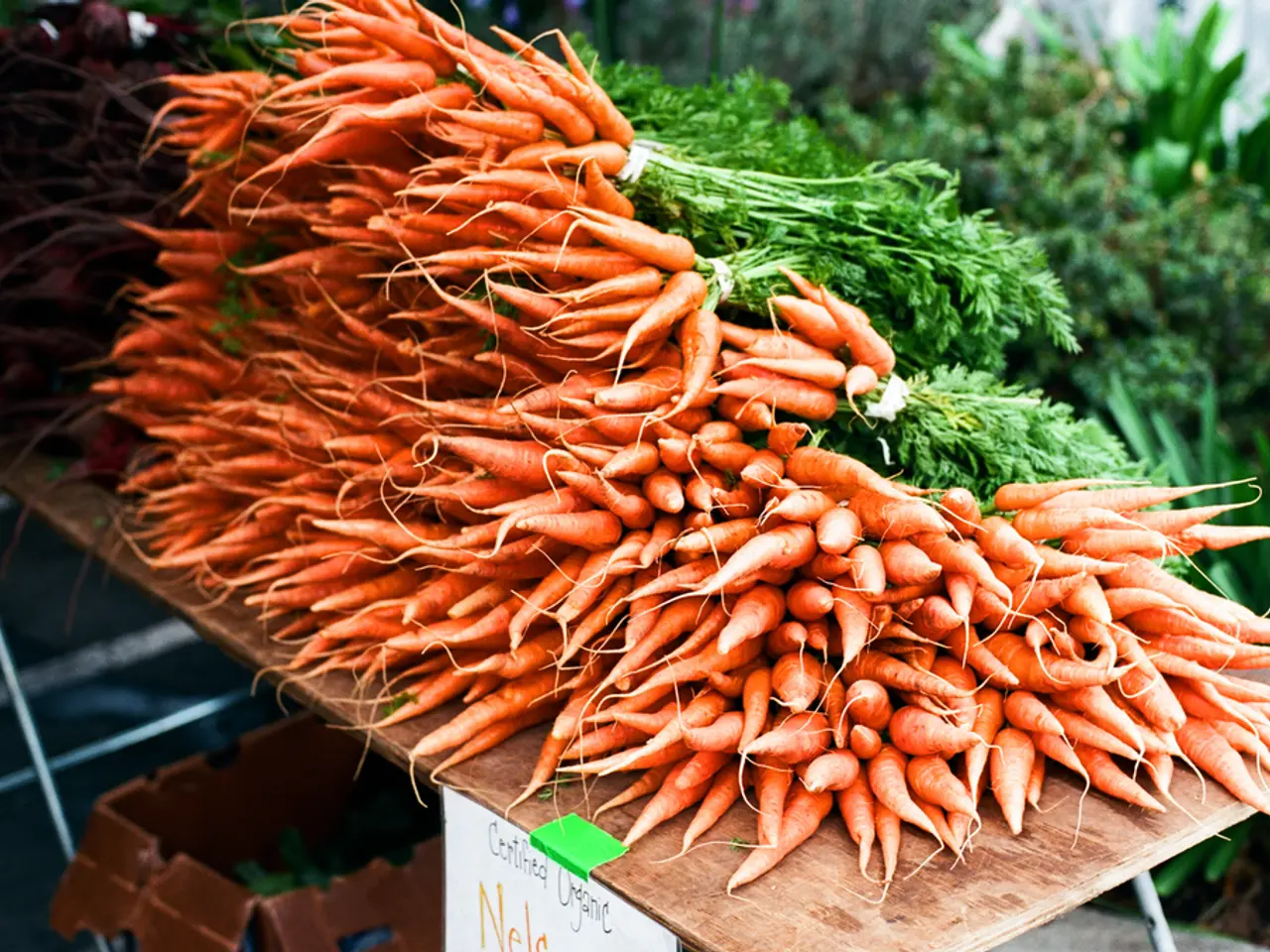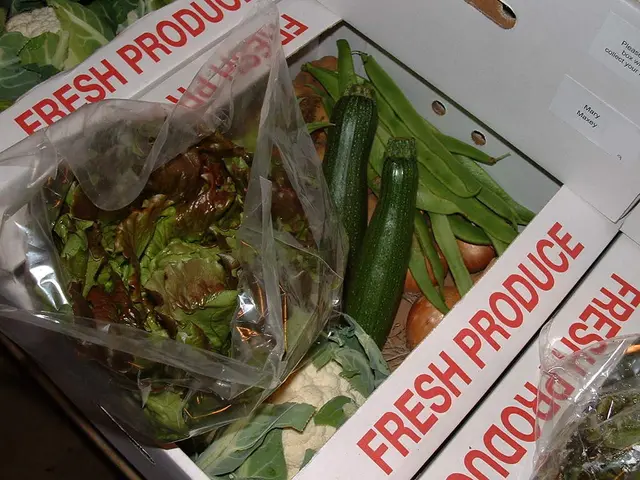Guide for Cultivating Carrots
Growing Carrots: A Comprehensive Guide
Carrots, a popular and versatile vegetable, thrive in the right conditions. Here's a guide to help you grow them successfully.
Soil Preparation
For optimal growth, carrots do well in light, well-drained but moisture-retentive soil. It is best not to add organic matter to the soil the year used for growing carrots, as it can lead to a compacted soil structure that hinders root development [1].
Harvesting and Storage
Harvesting carrots involves watering the compost first to soften it, followed by carefully lifting the carrots. Storing carrots in a clamp made using horticultural sand and straw is a good way to protect them from frost and make harvesting easier [2]. If you have a lot of carrots to store, you can make a larger clamp by digging a circular hole, adding a layer of sand, creating a ring of tightly-packed carrots, and adding layers of straw and soil [2]. In colder areas, carrots can be dug up in autumn, removed from the foliage, and stored in a clamp for replanting in spring.
Pest Control
Carrot fly is a common and serious pest that can ruin carrot crops by eating tunnels through the roots. To prevent carrot root fly, containers can be covered with horticultural fleece. Placing a 45cm-high fine-mesh barrier around crops or covering with fleece or similar material can also deter carrot fly [3].
Variety and Planting
Carrot seeds are sown in drills in prepared soil from March to June. Carrots can take up to three months to grow, with harvesting starting around 10-16 weeks after sowing. Alternating a row of carrots with a row of companion plants like onions or garlic may help to mask their smell [4].
To grow different varieties of carrots, including purple, yellow, and white types, you generally follow similar cultivation principles with slight variations depending on the specific variety and soil conditions [5]. For example, the ‘Danvers 126’ (orange) carrot grows to about 6–7 inches long and prefers full sun with heat tolerance, thriving in heavy soils, especially when interplanted with onions. It is frost tolerant and crack resistant, maturing in around 65 days [6]. The ‘Parisian’ carrot, which is suitable for heavy or rocky soils, grows short, globe-shaped roots rather than long roots and matures in about 60 days. These are good for container gardening and can tolerate less ideal soil conditions [4].
Growing Conditions
Carrots are cool-weather crops; optimal growing temperatures range from 15 °C to 20 °C (59 °F to 68 °F) [5]. Successive sowings every 3 weeks are recommended to extend harvest times, especially until about 10 to 12 weeks before the first fall frost in your area [1]. Carrots prefer loose, well-drained, sandy or sandy-loam soils rich in potassium [5]. Avoid nitrogen-rich fertilizers to reduce the risk of forks and splits.
Yield
Precise yields depend on variety, soil fertility, and climate but growing carrots properly spaced and thinned generally ensures a good-sized harvest. Maturing carrots can be harvested for winter storage when nighttime temperatures approach 28 °F (-2 °C), with some varieties, like ‘Scarlet Nantes,’ especially suited for fall harvests and holding well in the field without becoming woody [3].
In summary, sow carrot seeds shallow (about 3-6 mm), thin to 2 inches apart, and space rows 12-18 inches apart. Grow them in cool weather between 15-20 °C in well-drained, potassium-rich soil, adjusting cropping timing based on regional first frost dates and variety maturity. Purple, yellow, white, and orange carrots share similar cultural needs but be mindful of soil suitability and variety-specific traits like root shape or heat tolerance [1][2][4][5]. The average yield of carrots per 3m row is 3-4kg.
- Home-and-garden lifestyle enthusiasts might find the soil preparation for carrot cultivation interesting, as it's crucial to avoid adding organic matter the year used for growing carrots to prevent a compacted soil structure that hinders root development.
- In the process of gardening, one can consider growing various types of carrots, such as the 'Danvers 126' (orange) or the 'Parisian' (short, globe-shaped), to add a colorful and diverse veggie assortment in their home-and-garden plot.








